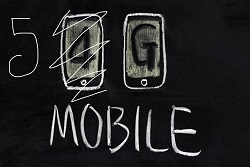The centralised radio access network (C-RAN) equipment market it set to top $10 billion (€8 billion) by 2018 as the technology becomes “the default 5G architecture”, according to new research from Infonetics.
According to the report, shipments of equipment including baseband units (BBUs) and remote radio heads (RRHs) have risen by $6 billion (€4.8 billion) since 2012, fuelled by RAN expansion in the West and the start of 5G rollouts in Japan and South Korea.
Stéphane Téral, Principal Analyst for Mobile Infrastructure and Carrier Economics at Infonetics Research, explained: “C-RAN is a reality, but very localised in two Asian countries, Japan and South Korea, which share much in common: absence of 2G, high density, fibre ubiquity and a strongappetite for innovation.”
“If fibre is the barrier to C-RAN adoption in the West, wireless fronthaul is coming to the rescue, but we have yet to see commercial deployments. Orange in Europe and Sprint in North America are in the driver’s seat, and we expect to see adoption of C-RAN in these regions starting in 2015.”
[Read more: European telcos continue to look at the future in Asia]
The study concluded that the chief drivers for C-RAN were strong radio network performance and readiness for LTE-Advanced technology, along with simplified antenna sites with smaller and more efficient equipment.
Ericsson, Nokia Networks and Samsung were identified as the top three vendors in the C-RAN market.
This week, Nokia Networks doubled data upload speeds for Ooredoo Qatar and Finnish incumbent Elisa in two separate trials of its Centralised RAN technology.
Both operators saw upload speeds boosted over two and a half times after Nokia ran its solution over their networks during events at the Hartwell Arena in Helsinki and ITU Telecom World in Qatar.
Téral said: “C-RAN is emerging as the default 5G architecture and will eventually morph into cloud RAN as more and more mobile network functions are virtualised.”
Read more:
Ericsson, IBM stunned by potential of phased array tech for 5G



